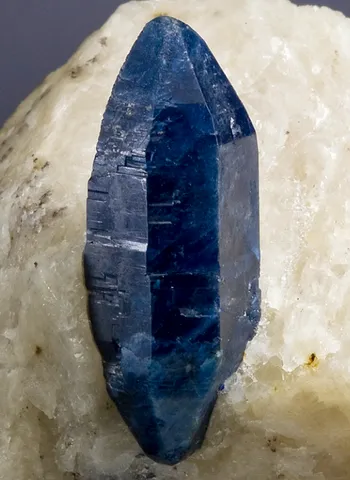AFGHANITE
Class : Silicates
Subclass : Tectosilicates
Crystal System : Trigonal
Chemistry : (Na,Ca,K)8(AlSiO4)6(SO4,Cl2,CO3)3 0.5H2O.
Rarity : Rare
Afghanite is a feldspathoid commonly accompanied by minerals from the sodalite family. It owes its name to its country of discovery : Sar-e-Sang in Afghanistan. It is a mineral of metamorphic limestones in contact with alkaline granites or syenites. It forms elongated azure blue hexagonal prisms ending in pyramids, its microcrystals can also be colorless. Although rare, it is a mineral that finds uses in jewelry and can be cut into faceted gems. Photo © Joe Budd
Afghanite in the World

Twinning
No known twin for this mineral species.
Fakes and treatments
Afghanite crystals are often released from their acid matrix, however the acid also etches the Afghanite which then takes on a molten appearance. If the sample is subsequently not properly neutralized, it whitens. Crystals not cleared with acid are rare.
Hardness : 5.5 to 6
Density : 2.6
Fracture : Conchoidal
Trace : White
TP : Translucent
RI : 1.523 to 1.529
Birefringence : 0.006
Optical character : Uniaxial +
Pleochroism : Low
Fluorescence : Orange
Solubility : Hydrochloric and sulfuric acids
Magnetism : None
Radioactivity : None

